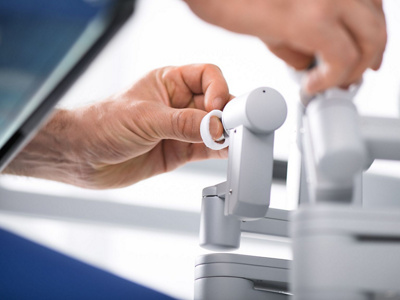Historically, the da Vinci robot was developed on command of the US Army to operate soldiers remotely. It was introduced in the world of surgery in the 2000s, first in the United States and then in many countries with a significant increase in the number of robots installed over the past 10 years.
The surgeon, ergonomically seated next to the operating table, is at the controls of the device, assisted by his fellow surgeon and the instrumentalist with the patient.
Three or four arms of the robot (depending on the difficulty of the intervention) are installed above the patient (minimal incisions) controlled by the surgeon who manipulates them from his console using joysticks. The precision of this surgery comes from the fact that the camera is in 3D with the possibility of zooming at the convenience of the operator but also articulated clamps with 6 possible axes of rotation.
Robotic surgery was introduced at Hirslanden Clinique des Grangettes in 2008. Since 2015 we have at our disposal the latest generation of the robot, the Da Vinci Xi. Some gynecological procedures can be performed robotically such as removal of the uterus (hysterectomy), removal of one or more fibroids (myomectomy) and endometriosis.
Currently 3 referring surgeons from our gynecological surgery center use robotic surgery.




